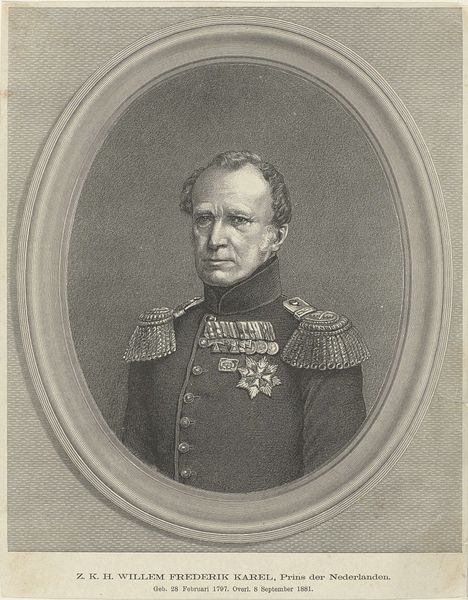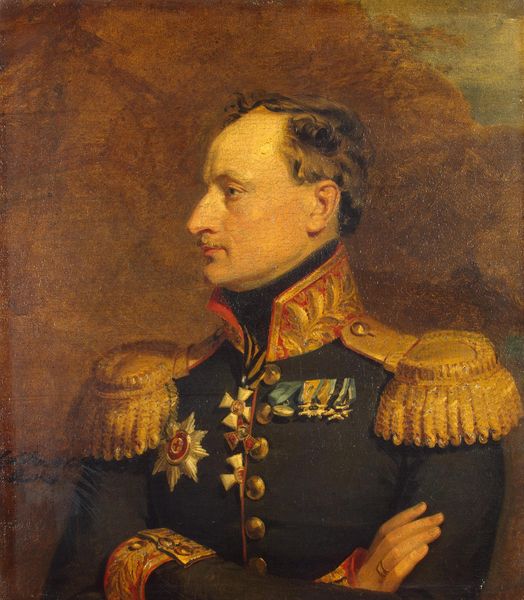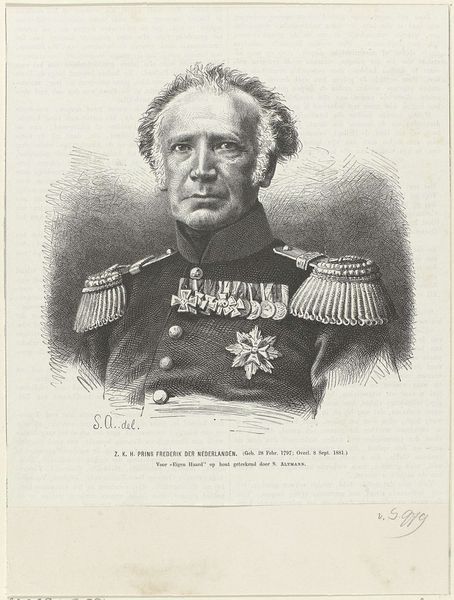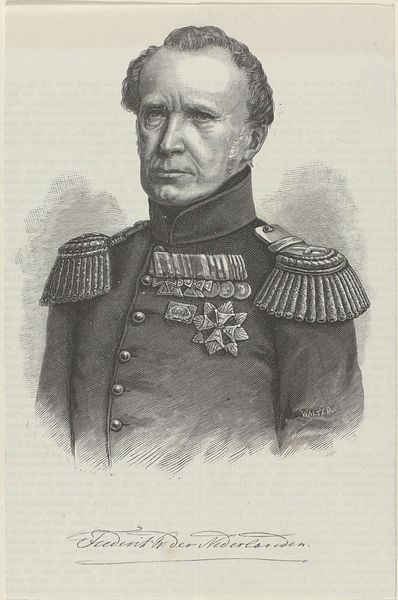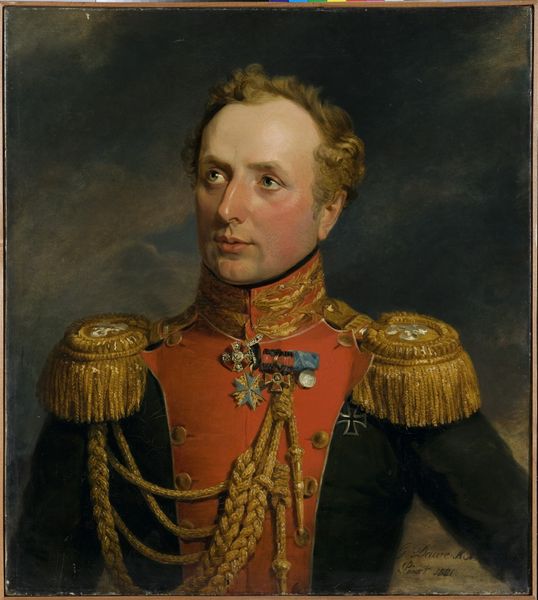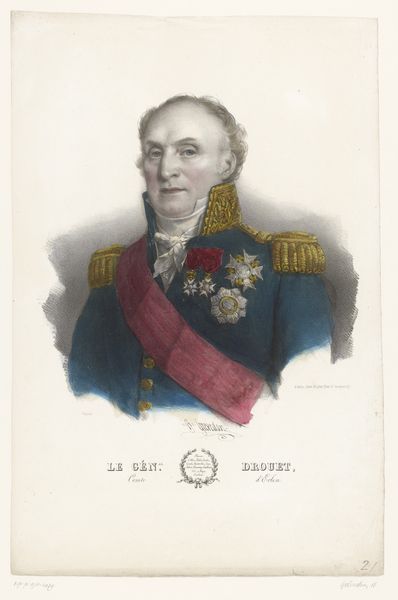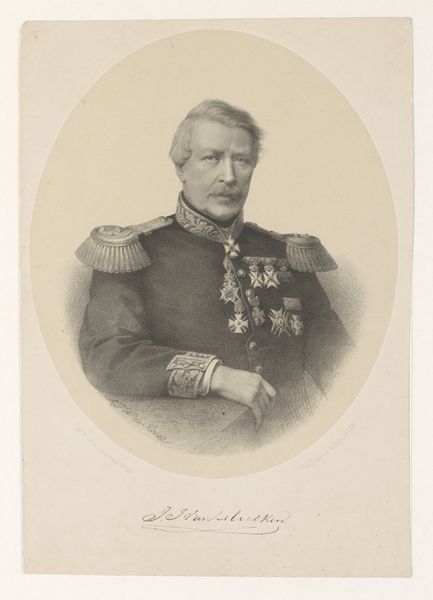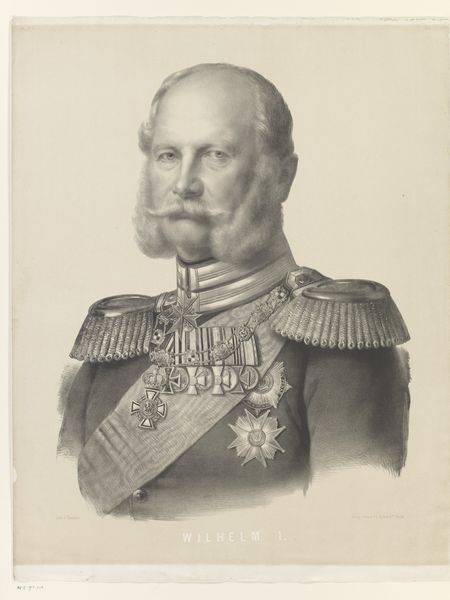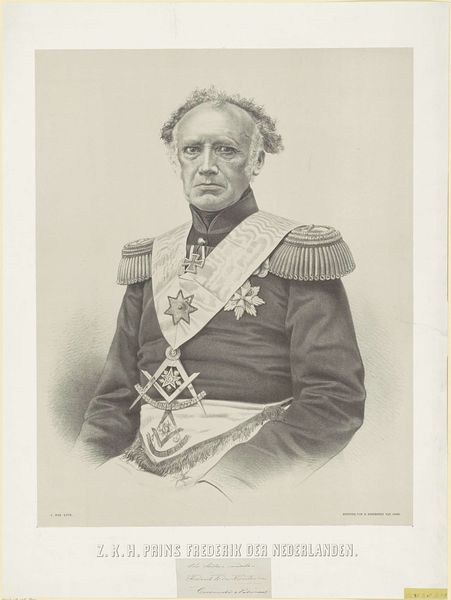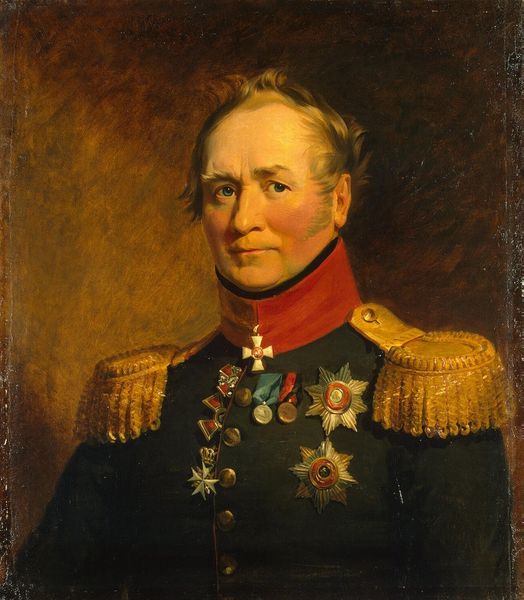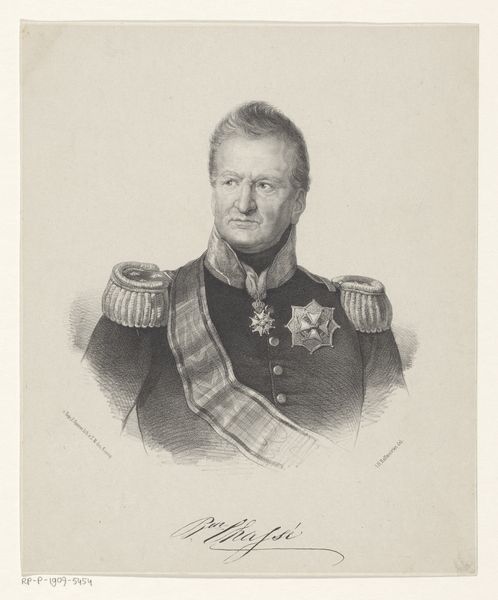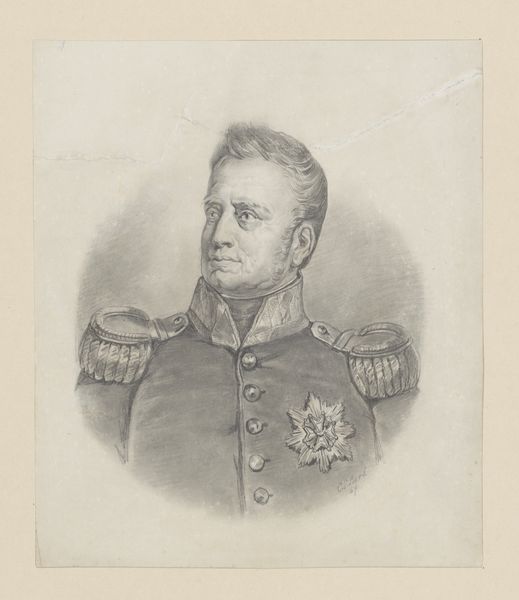
painting, oil-paint
#
portrait
#
painting
#
oil-paint
#
portrait drawing
#
history-painting
#
academic-art
#
realism
Dimensions: height 456 mm, width 379 mm
Copyright: Rijks Museum: Open Domain
Curator: At first glance, the man's face—all serious and sharp lines—communicates authority, almost austerity. Editor: Indeed. We're looking at a piece titled "Portret van Frederik, prins der Nederlanden," which translates to "Portrait of Frederick, Prince of the Netherlands," believed to be completed around 1866. This portrait is currently housed here at the Rijksmuseum. It is an oil-on-canvas painting. Curator: Given the subject matter, one wonders about the function of the artistic labor here. What statements did this painting need to perform in service to royal image-making and circulation? Did the artist's hand ultimately reproduce existing political hierarchies through careful strokes of oil paint? Editor: I think your observation regarding its "austerity" really strikes at the heart of it. Consider the period. This painting arrives at a time when photography is becoming a powerful tool for representing reality, and for the monarchy to commission a painted portrait meant, consciously or unconsciously, to leverage its ability to communicate something that a photograph could not. Curator: Namely, status. Just look at the way those gilded epaulettes shine—are they metallic thread, carefully stitched? The tactile impression, almost the illusion of actually touching the material, it’s designed to awe. How complicit was the artist in perpetuating these notions? Editor: The artist would have had constraints and expectations both by the subject and the tradition they operated within. But notice the context here. This work takes clear inspiration from academic art traditions, emphasizing history and grand presentation. These stylistic influences are markers, cues to audiences of the time, to read this sitter in a particular way—powerful, respected, and part of a larger historical narrative. We mustn't overlook how "realism" in paintings becomes, itself, a constructed aesthetic to lend authority to its subject. Curator: Right, the artist strategically adopted what are coded material markers of authority. So while it masquerades as mere depiction, it subtly functions as propaganda. Editor: Precisely. This piece illuminates not only a person, but also the political role of portraiture. A tangible object infused with carefully designed symbolism. Curator: It provides a fascinating case study in the materiality of power and representation, even today. Editor: I agree, considering how portraits have shaped political views in history helps contextualize it. Thank you.
Comments
No comments
Be the first to comment and join the conversation on the ultimate creative platform.
